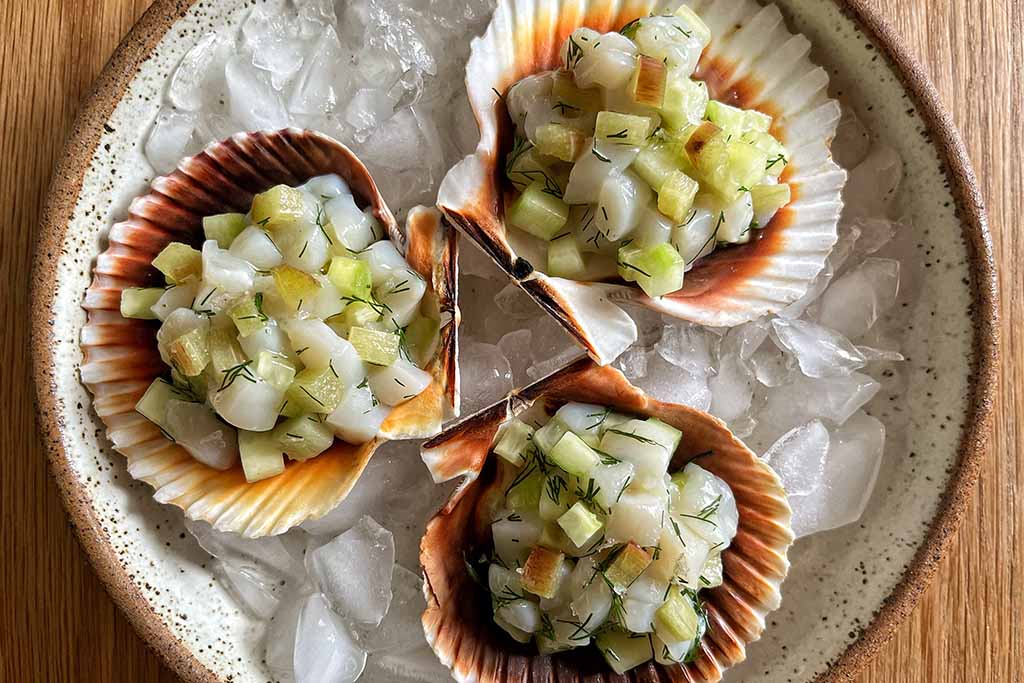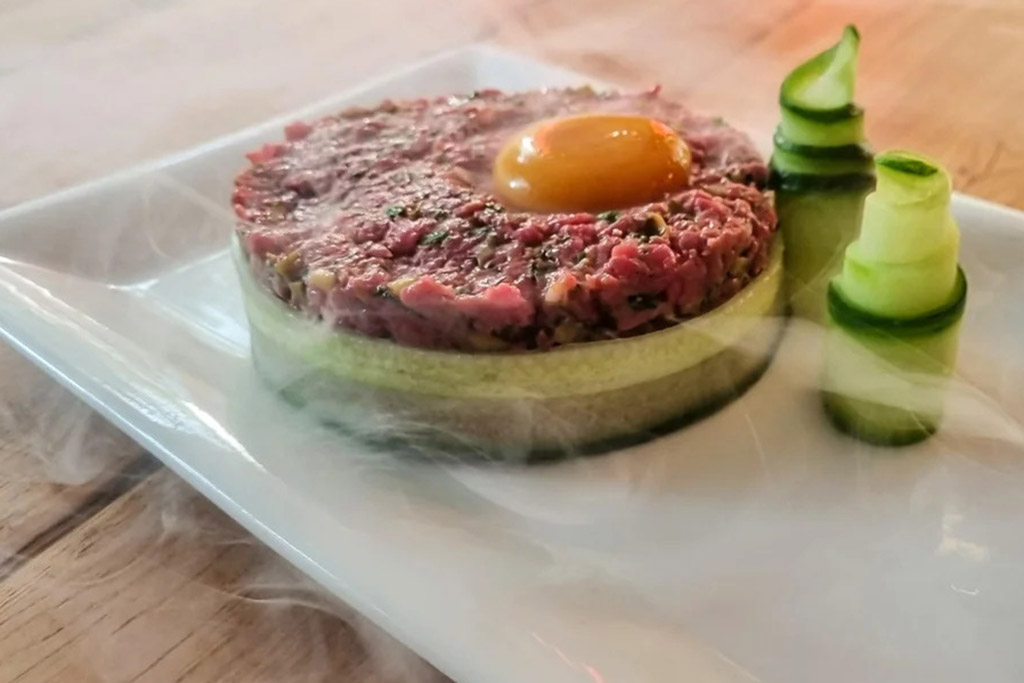1. Arrival Beneath the Maple Sky
Touching down at Montréal–Trudeau International Airport, I felt an immediate shift in atmosphere. The air carried that unmistakable northern crispness, even in early autumn, and the hum of French accents mixed with English formed the city’s characteristic cadence. Montréal doesn’t whisper its identity; it sings it—through language, architecture, and especially through cuisine.
My journey to Montréal began not as an exploration, but almost as a pilgrimage. Here is a city where cobblestone streets and centuries-old churches sit beside gleaming skyscrapers, where the past folds easily into the present. But what captivated me most was the cuisine. Not simply what was served, but how it was served—each dish a conversation, each restaurant a stage for a dialogue between Old World finesse and New World creativity.
2. A City That Eats With Emotion
There are cities where you eat to survive. Then there are cities where you survive just to eat. Montréal belongs squarely in the latter category. The culinary identity here is woven from two powerful cultural threads: the structured sophistication of French cuisine and the warmth and inventiveness of Canadian gastronomy. This marriage of traditions has birthed a dining scene that is both grounded and daring, with chefs who lean into heritage while stretching toward innovation.
What stood out early on was the intention behind every plate. There’s no laziness in Montréal kitchens. Even something as simple as buttered bread arrives as a crafted expression—perhaps seaweed-infused butter churned in-house, or bread made from locally milled flour, baked hours before service. The attention to detail is everywhere, often in places diners don’t notice unless they’re truly watching.
3. A Place to Begin: Bouillon Bilk
Walking along Boulevard Saint-Laurent, the restaurant almost hides from you. Its understated exterior—just a sliver of glass in a row of concrete—feels like Montréal in essence: unassuming, self-contained, but holding within it a profound interior world.
Bouillon Bilk doesn’t announce itself. It unfolds.
The interior is minimalist, bathed in whites and greys, allowing the food to hold center stage. I took a seat near the back, the kind of table where the lighting falls just right and the energy of the room feels concentrated. The menu was a study in precision: short, seasonal, and written in sparse language. Each item—often listed with just three or four ingredients—held stories that would only reveal themselves through tasting.
I started with a dish of scallops served raw, accompanied by thinly sliced rhubarb, sorrel, and a drizzle of buttermilk. It was not just bright and sharp, but thoughtfully restrained. The scallops weren’t dressed up; they were highlighted. Next came guinea fowl, cooked sous-vide and then seared, resting in a jus that hinted at Madeira wine, surrounded by a creamy parsnip purée and wilted radicchio. The bitterness of the greens, the sweetness of the wine, the earthiness of the root vegetable—it was all there in one bite.

Reservations here are best made through Tock, which allows you to see the menu structure in advance. It’s worth securing a table at least a week in advance, especially during the busier months of September through December.
4. Between Courses and Cobblestones: Old Montréal
Dinner always tastes different when the hours before it are spent walking through centuries. That afternoon, I had wandered the cobbled alleys of Old Montréal. The air held a soft, amber warmth as the sun dropped behind the Notre-Dame Basilica, casting long shadows through Place d’Armes.
The charm of Old Montréal is not only architectural—it’s rhythmic. There’s the occasional clop of horse-drawn carriages, the sound of jazz leaking from terrace cafés, the sizzle of food trucks by the river. When I stopped for a coffee on Rue Saint-Paul, I watched an artist paint the city as if she were preserving it from time.
This setting was the perfect prelude to what came next.
5. A Night at Toqué!: The Flagship of Québécois Fine Dining
Toqué! is no secret to the world of gastronomy. Founded by Chef Normand Laprise, the restaurant is synonymous with Québec’s terroir movement. But nothing prepares you for what it feels like to actually dine there.
From the first sip of the Kir Royale—served not with the traditional cassis, but with a tart local chokecherry reduction—I knew I was in for something cerebral.
The tasting menu that evening included seven courses. Each was a composition of texture and temperature, anchored by local ingredients: duck magret with spruce tip jus, foie gras torchon with cloudberry jelly, and perhaps most unforgettable, a broth made from roasted bones and smoked mushrooms, poured tableside over a raviolo stuffed with wild hare.
Every plate arrived with both gravitas and grace. The service was attentive without performance, the staff moving like musicians in a chamber quartet—each movement necessary, each gesture intentional.
I booked my table via OpenTable, and found the platform reliable, especially when traveling without a local contact.
6. Midday Indulgence at Le Club Chasse et Pêche
Tucked away on Rue Saint-Claude, Le Club Chasse et Pêche is the kind of restaurant that understands luxury in a quiet way. The name evokes hunting and fishing, and the menu reflects this philosophy with dishes that emphasize primal flavors executed with sophistication.
Lunch here is a wholly different experience than dinner. The midday service allows the dishes to stretch out slowly, unhindered by the theatre of an evening rush. I chose the Arctic char, cooked with a skin so crisp it shattered like caramel, nestled among roasted salsify, sweet corn purée, and oyster mushrooms. The sauce was a beurre blanc enriched with clam juice—a marine whisper that lingered on the tongue.
What impressed me was how deeply the flavors echoed the landscape. It was Canadian wilderness refined by French structure. A wilderness in a waistcoat.
7. From Brasserie to Brilliance: Monarque
Not far from Victoria Square, Monarque is a dual-concept restaurant: brasserie in the front, fine dining in the back. I chose the brasserie side that evening, preferring to watch the local crowd and feel the rhythm of the room. The lighting was warm, the ceilings high, and the conversations around me rolled between French and English like waves.
I ordered the veal sweetbreads, served over pommes purée and glazed root vegetables. Rich, almost decadent, and perfectly offset by a glass of white from the Loire Valley. For dessert: a maple-syrup crème brûlée, served with a paper-thin sesame tuile and preserved cranberries.
Their online booking system, embedded on their website, is efficient. I’d recommend choosing a late seating—around 8:30 p.m.—to catch the full character of the room.
8. A Pause for the Palette: Vin Mon Lapin
Located in the Little Italy neighborhood, Vin Mon Lapin is casual in demeanor but fiercely devoted to natural wines and inventive small plates. It felt like stepping into someone’s home—if that home was staffed by sommeliers and chefs who had read every new food philosophy emerging from Copenhagen to Tokyo.
What arrived at my table that night: beef tartare with smoked egg yolk and fermented turnips, then grilled octopus with apple butter and charred radicchio. Each dish was playful, even rebellious, but always deeply intentional.

The wine list reads like a love letter to unfiltered fermentation. I asked for a wine with high acidity and no oak, and they brought a chilled Quebecois cider that practically danced in the glass.
No reservations via third-party apps here—Resy is your best option. Or walk in early and hope the host is in a generous mood.
9. Late Nights and Jazz: A Bite at Leméac
Some cities offer comfort late at night in the form of diners and fast food. Montréal offers Leméac.
Open until the early hours, Leméac blends bistro charm with serious culinary chops. After a late-night set at Upstairs Jazz Bar, I arrived slightly buzzed on music and in need of something that felt like both an ending and a continuation.
The steak frites came, of course. Perfectly cooked, served with a Béarnaise that bordered on spiritual. But it was the warm beet salad with goat cheese and tarragon vinaigrette that caught me off guard. Light, earthy, and quietly thrilling.
Tables are best secured through Bookenda, a platform more commonly used across Québec. It handles last-minute availability better than most.
10. Coffee, But Make It Culinary: Dispatch
A city that takes food this seriously rarely slouches on coffee. Dispatch, with locations scattered throughout the Plateau and Mile End, elevates the daily ritual. Their lattes are balanced, their cortados precise. But beyond espresso, what stood out was their food program: house-made granola with labneh and dried cherries, avocado toast topped with pickled fennel and chili oil.
Mornings in Montréal start slow. And they should.
11. Final Plates, Unfinished Appetite
There’s something haunting about leaving a city that feeds you in layers—flavor, memory, texture, scent. Montréal is not content with just feeding your appetite. It feeds your sense of place, your understanding of how history and innovation can sit at the same table.
I left the city not quite full. Not because I didn’t eat enough, but because Montréal leaves you wanting more—another bite, another season, another table in a different quartier.
